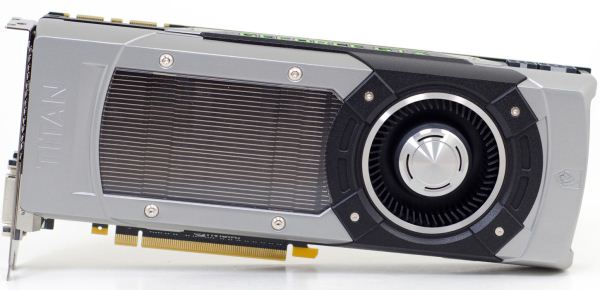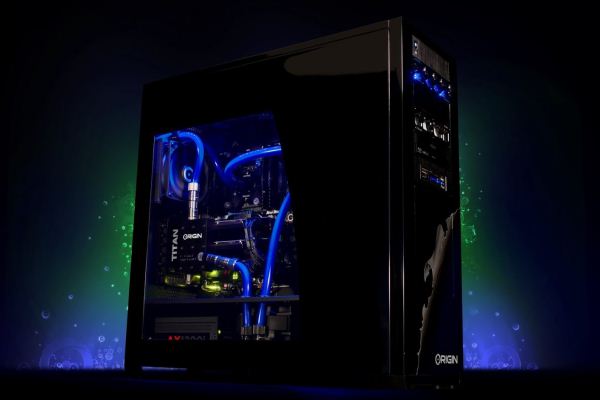NVIDIA’s GeForce GTX Titan Review, Part 2: Titan's Performance Unveiled
by Ryan Smith & Rahul Garg on February 21, 2013 9:00 AM ESTFinal Thoughts
Bringing things to a close, most of what we’ve seen with Titan has been a long time coming. Since the introduction of GK110 back at GTC 2012, we’ve had a solid idea of how NVIDIA’s grandest GPU would be configured, and it was mostly a question of when it would make its way to consumer hands, and at what clockspeeds and prices.
The end result is that with the largest Kepler GPU now in our hands, the performance situation closely resembles the Fermi and GT200 generations. Which is to say that so long as you have a solid foundation to work from, he who builds the biggest GPU builds the most powerful GPU. And at 551mm2, once more NVIDIA is alone in building massive GPUs.
No one should be surprised then when we proclaim that GeForce GTX Titan has unquestionably reclaimed the single-GPU performance crown for NVIDIA. It’s simply in a league of its own right now, reaching levels of performance no other single-GPU card can touch. At best, at its very best, AMD’s Radeon HD 7970GE can just match Titan, which is quite an accomplishment for AMD, but then at Titan’s best it’s nearly a generation ahead of the 7970GE. Like its predecessors, Titan delivers the kind of awe-inspiring performance we have come to expect from NVIDIA’s most powerful video cards.
With that in mind, as our benchmark data has shown, Titan’s performance isn’t quite enough to unseat this generation’s multi-GPU cards like the GTX 690 or Radeon HD 7990. But with that said this isn’t a new situation for us, and we find our editorial stance has not changed: we still suggest single-GPU cards over multi-GPU cards when performance allows for it. Multi-GPU technology itself is a great way to improve performance beyond what a single GPU can do, but as it’s always beholden to the need for profiles and the inherent drawbacks of AFR rendering, we don’t believe it’s desirable in situations such as Titan versus the GTX 690. The GTX 690 may be faster, but Titan is going to deliver a more consistent experience, just not quite at the same framerates as the GTX 690.
Meanwhile in the world of GPGPU computing Titan stands alone. Unfortunately we’re not able to run a complete cross-platform comparison due to Titan’s outstanding OpenCL issue, but from what we have been able to run Titan is not only flat-out powerful, but NVIDIA has seemingly delivered on their compute efficiency goals, giving us a Kepler family part capable of getting far closer to its theoretical efficiency than GTX 680, and closer than any other GPU before it. We’ll of course be taking a further look at Titan in comparison to other GPUs once the OpenCL situation is resolved in order to come to a better understanding of its relative strengths and weaknesses, but for the first wave of Titan buyers I’m not sure that’s going to matter. If you’re doing GPU computing, are invested in CUDA, and need a fast compute card, then Titan is the compute card CUDA developers and researchers have been dreaming of.
Back in the land of consumer gaming though, we have to contend with the fact that unlike any big-GPU card before it, Titan is purposely removed from the price/performance curve. NVIDIA has long wanted to ape Intel’s ability to have an extreme/luxury product at the very top end of the consumer product stack, and with Titan they’re going ahead with that.
The end result is that Titan is targeted at a different demographic than GTX 580 or other such cards, a demographic that has the means and the desire to purchase such a product. Being used to seeing the best video cards go for less we won’t call this a great development for the competitive landscape, but ultimately this is far from the first luxury level computer part, so there’s not much else to say other than that this is a product for a limited audience. But what that limited audience is getting is nothing short of an amazing card.
Like the GTX 690, NVIDIA has once again set the gold standard for GPU construction, this time for a single-GPU card. GTX 680 was a well-built card, but next to Titan it suddenly looks outdated. For example, despite Titan’s significantly higher TDP it’s no louder than the GTX 680, and the GTX 680 was already a quiet card. Next to price/performance the most important metric is noise, and by focusing on build quality NVIDIA has unquestionably set the new standard for high-end, high-TDP video cards.
On a final note, normally I’m not one for video card gimmicks, but after having seen both of NVIDIA’s Titan concept systems I have to say NVIDIA has taken an interesting route in justifying the luxury status of Titan. With the Radeon HD 7970 GHz Edition only available with open air or exotic cooling, Titan has been put into a position where it’s the ultimate blower card by a wide margin. The end result is that in scenarios where blowers are preferred and/or required, such as SFF PCs or tri-SLI, Titan is even more of an improvement over the competition than it is for traditional desktop computers. Or as Anand has so eloquently put it with his look at Falcon Northwest’s Tiki, when it comes to Titan “The days of a high end gaming rig being obnoxiously loud are thankfully over.”
Wrapping things up, on Monday we’ll be taking a look at the final piece of the puzzle: Origin’s tri-SLI full tower Genesis PC. The Genesis has been an interesting beast for its use of water cooling with Titan, and with the Titan launch behind us we can now focus on what it takes to feed 3 Titan video cards and why it’s an impeccable machine for multi-monitor/surround gaming. So until then, stay tuned.












337 Comments
View All Comments
chizow - Friday, February 22, 2013 - link
Sorry Ryan but that's a bit of a cop-out exuse imo. Anyone who can fork out $1K for a few GPUs in SLI should be able to figure out how to google SLI bits and enter them into Nvidia Inspector. They are "enthusiasts" afterall, right?SLI working on launch day with proper SLI bits:
http://www.overclock.net/t/1334390/how-to-get-prop...
Nvidia is usually pretty good about updating these bits or launching optimized drivers ahead of a big game launch, but sometimes they are a few days behind. The same can be said for single-GPU performance optimizations, but obviously less frequently than SLI.
With few exceptions over the course of my 5 year run with SLI, I've been able to get SLI working on Day 1 for most major game launches. AA is more hit or miss, but generally with Nvidia you don't have to wait for updates if you know how to manipulate SLI/AA bits (or use google).
In any case, I think Titan has created a new paradigm that may need to be addressed, where 2 performance parts are going to be preferable over a single GPU, when those 2 parts in CF/SLI offer 150% of the performance at 75% of the price.
Veteranv2 - Thursday, February 21, 2013 - link
And that is a subjective view. Not objective.You don't have 1 graph where you prove dual GPU's are inconsistent. You don't prove your point, you just bring up a subjective view defending a 1000$ card which is crap compared to best offer from AMD...
ronin22 - Thursday, February 21, 2013 - link
Haters gonna hate.CeriseCogburn - Thursday, February 21, 2013 - link
liars gonna liehttp://www.pcper.com/reviews/Graphics-Cards/NVIDIA...
CeriseCogburn - Thursday, February 21, 2013 - link
here's a chart showing how amd fails utterly...http://www.pcper.com/reviews/Graphics-Cards/NVIDIA...
Have fun amd fanboy, the lies you live by are now exposed.
Veteranv2 - Friday, February 22, 2013 - link
Same comment for you:Wow, you base your opinion on 1 game on a point that 1 review site has made without knowing that the FRAPS software measures correctly and that drivers are good with that game?
Wow, that blows my mind. How dumb can be people be?
This is the same like saying, wow this 1 musquito didn't give me malaria, malaria doesn't exist....
I am not a fanboy, except for my wallet and honesty.
Anandtech makes a point which it does not prove. That is my point. Hence if you cannot prove a point, but still make it, that makes you subjective. So either prove it, or shut up about it and be objective.
veppers - Saturday, February 23, 2013 - link
I'm not sure you should be calling anyone out for being a fanboy when your childish pro-Nvidia posts are here for all to see. (happy Nvidia customer here just incase you wanted to go there)Also, how many times are you going to spam that same link?
CeriseCogburn - Saturday, February 23, 2013 - link
As many times as the lying whiners pull their stupid crap.It should be spammed about 300 times in all the articles here since the Jan 2012 release of the amd failship 79xx, shouldn't it ?
Hello amd fanboy.
CeriseCogburn - Tuesday, February 26, 2013 - link
" SLI profiles for optimum scaling, NVIDIA has done a very good job here in the past, and out of the 19 games in our test suite, SLI only fails in F1 2012. Compare that to 6 out of 19 failed titles with AMD CrossFire. "http://www.techpowerup.com/reviews/NVIDIA/GeForce_...
LOL - yes you sure know what you're talking about...
CeriseCogburn - Thursday, February 21, 2013 - link
Take a look at HOW CRAP amd dual top end card setups actually are and how FRAPS, which this site regularly uses has been SCREWING nVidia for years...http://www.pcper.com/reviews/Graphics-Cards/NVIDIA...
Enjoy the years of lies you have swallowed whole, while sentient human beings like myself have warned against.